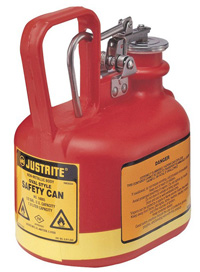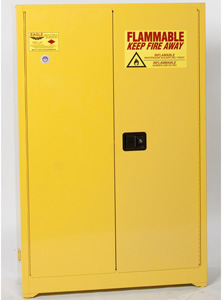| The Home page of ILPI's Safety Data Sheet (SDS) Resource, the leader in SDS information since 1995! | |
| The history and philosophy behind this resource. | |
| A curated collection of books and reference materials concerning Safety Data Sheets and closely related topics. | |
| Paste your plain text SDS into the SDS-Demystifier, and it will be converted into a hypertext-enriched document with links to detailed explanations of each key term. | |
| An extensive list of frequently asked questions about Safety Data Sheets including regulations, content, compliance, and more. | |
| A humorous take on Safety Data Sheet jargon. Fill in the blanks on our entry form to generate a personalized Unsafety Data Sheet to share with your coworkers. | |
| Since 1995, we've maintained this massive curated list of the best places to find Safety Data Sheets on the Internet. | |
| You are here! Way more than a glossary, this hypertext-enhanced resource covers hundreds of SDS-related terms and expert knowledge. Each entry includes both the SDS relevance and links to additional authoritative resources. | |
| Archived results of Safety Data Sheet related polls taken by some of our millions of site visitors | |
| The OSHA regulations behind SDS regulations, including the inspection guidelines and over 400 official interpretations letters under the Hazard Communication Standard | |
| Commercial suppliers of SDS authoring and management software as well as cloud compliance services. | |
| Commercial companies that will create SDS's for your specific needs as well as SDS translation companies. |

Safety signs, banners, and scoreboards? Get yours at Safety Emporium!
Definition

Store and dispense flammable liquids safely with flammable liquid safety cans from Safety Emporium.
A combustible material is a solid or liquid than can be easily ignited and burned. OSHA, DOT, and other federal regulations, apply specific technical definitions to this term.
Combustible solids are those capable of igniting and burning. Wood and paper are examples of such materials.
Appendix B of the 2012 revision of 29 CFR 1910.1200, the OHSA Hazard Communication Standard (HCS 2012) defines ready combustible solids as "powdered, granular, or pasty chemicals which are dangerous if they can be easily ignited by brief contact with an ignition source, such as a burning match, and if the flame spreads rapidly."
Combustible liquids are defined by the National Fire Protection Association code NFPA 30 - Flammable and Combustible Liquids Code as "Any liquid that has a closed-cup flash point at or above 100 deg. F (37.8 deg. C), as determined by the test procedures and apparatus set forth in Section 4.4. Combustible liquids are classified according to Section 4.3." You can view (but not copy, save, or distribute) NFPA 30 on the NFPA web site if you want more details on the classes of combustible liquids.
Spontaneously combustible materials can undergo combustion and burn without the addition of heat or flame; arguably, the term "spontaneously flammable" is more appropriate. See the flammable solids entry for more info.
Additional Info
The US Department of Transportation defines the term readily combustible solids at 49 CFR 173.125 (Subpart D) as materials that:
- Are solids which may cause a fire through friction, such as matches;
- Show a burning rate faster than 2.2 mm (0.087 inches) per second when tested in accordance with the UN Manual of Tests and Criteria (IBR, see § 171.7 of this subchapter); or
- Any metal powders that can be ignited and react over the whole length of a sample in 10 minutes or less, when tested in accordance with the UN Manual of Tests and Criteria
These are closely related to the third broad class of materials listed under flammable solids.
Prior to 2012, the U.S. Occupational Safety and Health Administration (OSHA) Standard 29 CFR 1910.106 (then titled "Flammable and Combustible Liquids" but now titled simply "Flammable Liquids" ) defined a combustible liquid as "any liquid having a flash point at or above 100 deg. F (37.8 deg. C), but below 200 deg. F (93.3 deg. C), except any mixture having components with flashpoints of 200 deg. F (93.3 deg. C), or higher, the total volume of which make up 99 percent or more of the total volume of the mixture." This definition has been dropped from the current version of 29 CFR 1910.106 which now addresses such materials as flammable in order to bring the standard into compliance with the Globally Harmonized System.
The previous version of 29 CFR 1910.106 is available for historical reference courtesy of the Internet Wayback Machine.
SDS Relevance
The term combustible can appear in multiple places on a single Safety Data Sheet. For example, it could be mentioned as a physical hazard in Section 2 (Hazard(s) identifications) or in Section 5 (fire-fighting measures).
Proper storage and use of combustible materials is absolutely critical in maintaining a safe work place. Avoid placing or using combustible materials near sources of heat or flame (direct sunlight, furnaces, pilot lights etc.). Use caution when disposing of combustible materials such as linseed oil-soaked rags (which can spontaneously combust). When dispensing combustible or flammable liquids, keep in mind that static electricity poses a very real threat; obey all standard bonding and grounding practices.
Two other tools that can be part of your flammable and combustible liquids safety plan are the use of safety cans and flammable storage cabinets. Safety cans have flash arrestors and gasketed lids to prevent solvent vapors from flashing back to the liquid if ignited. Flammable storage cabinets have insulating double walls and automatically closing doors so that stored solvents will not readily ignite in the event of a fire.
Also note that many common dusts such as flours, and grains can readily combust or even explode. See our dust entry for additional information.

Store your solvents safely with flammable storage safety cabinets from Safety Emporium.
Further Reading
- OSHA's web site on combustible dust.
- Visit the National Fire Protection Association home page for fire safety information, tips and codes.
- Fire Safety Standards at US OSHA.
- OSHA has a nice summary of Flammable and Combustible concerns for small business owners.
- Training Materials for Flammable Liquids at the OSHA Office of Training and Education.
- Flammable and Combustible Liquids Overview courtesy of UC San Diego.
- How to Work Safely with - Hazardous Products using the "Flame" Pictogram at the Canadian Centre for Occupational Health & Safety (CCOSH).
- How to Work Safely with - Hazardous Products using the "Flame Over Circle" Pictogram, also at CCOSH.
- Spontaneous Combustion - Dos & Don'ts at Union Mutual.
See also: decomposition, flammable, flammable solid, flash point, temperature units.